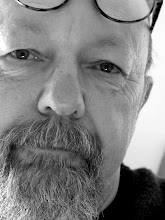




I've got a few weeks yet until my first summer show - the Arts Alive event in downtown Falmouth. It's always a pleasant weekend, if not necessarily a big money-maker. The arts festival started about seven years ago as a way of gathering a variety of artists on the green library lawn off Main St., showing off local creative folk. It's expanded every year, and now marks the beginning of the summer arts season for those of us who are the "local creative folk."
It's been a busy spring for me, mostly because of the workshop here with Doug Fitch and Hannah McAndrew and then my two-week show in Boston with painter Dara Pannebaker. Finally got back into the studio last week, needing to make mugs and big things, and maybe a few medium things to fit on the 9-inch shelf on the bottom of the kiln. Plus, now that spring is genuinely here on Cape Cod, the front door can be open and the sounds and light of the neighborhood can penetrate into the dusty, disorderly studio.
So, here are a few photos of what's been going on here. And one image of a fine little mug by Joy Tanner, brought back from North Carolina by Cape Cod potter Gail Turner. Gail dropped by with Falmouth potter Shelley Fenily to tell the story of her recent tour of North Carolina potteries, and she brought back this lovely soda-glazed mug. Gail loved North Carolina and the pots she saw there. She should have a blog so that she could tell you so herself.
Photos: Top, first attempts at moribana pots, an order from a Falmouth woman who is deeply into ikebana. She's looking for two, about 14 inches in diameter, which means I'll make ... who knows how many, to get two that we both like. The mug in the photo is by Doug Fitch, for scale. Below that, drying mugs, 8-pound hakeme-brushed vases, teabowls and shallow serving bowls, more biggish vases drying, and that nice little Joy Tanner mug. Thanks, Gail.











